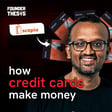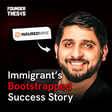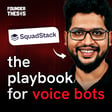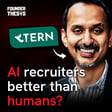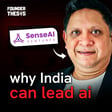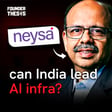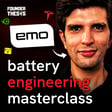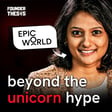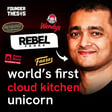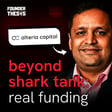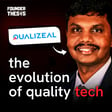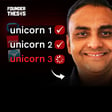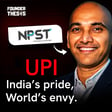
How "Efficiency First, Scale Later" Built 2 Unicorns - FirstCry and Xpressbees
"We understood that logistics wasn't just a back-end function—it was a core component of customer satisfaction."
This was the pivotal realization inside FirstCry that sparked a billion-dollar idea. By reframing a major operational problem into a strategic opportunity, Amitava Saha didn't just fix a bottleneck for his company; he built an entirely new one, Xpressbees, to serve the whole e-commerce industry.
Amitava Saha is the Co-Founder and CEO of Xpressbees and the Co-founder and former COO of FirstCry. He is one of the few entrepreneurs in India to have built two unicorn companies from the ground up. Under his leadership, Xpressbees has grown from handling approximately 50,000 shipments a day to over 3 million and is valued at over $1.4 billion. An alumnus of IIT (BHU), Varanasi, and IIM Lucknow, his journey from financing his own MBA with a bank loan to becoming a celebrated two-time unicorn founder is an inspiration for entrepreneurs everywhere.
In this episode, Amitava Saha sits down with our host Akshay Datt to discuss his incredible journey.
Key Insights from the Conversation:
- Solving Your Own Problem: Xpressbees was born out of the logistical frustrations faced by its parent company, FirstCry. This "inside-out" approach gave it a battle-tested product from day one.
- The Power of Assortment: A key strategy for FirstCry's initial success was its relentless focus on creating a wider product assortment than any physical store could offer, directly addressing a major customer pain point.
- Operational Excellence as a Moat: Amitava built his logistics arm with a mandate of zero CapEx and extreme efficiency, a principle that remains core to Xpressbees today.
- Pragmatic Technology: Technology at Xpressbees is not built for its own sake but is a tool to serve the two most important pillars of logistics: cost and quality of service.
- The Asset-Light Model: The business was intentionally designed to be asset-light, using a hybrid model of owned hubs and franchise partners to maintain flexibility and scale efficiently.
Chapters:
(00:00) - Intro
(01:12) - Early Career: Why a Stable Job Was More Important Than Entrepreneurship
(04:11) - The Path to Tech Sales & Navigating the Dot-Com Bust
(11:53) - The Brainvisa Story: From a B2C Pivot to a Profitable Exit
(23:41) - Founding FirstCry: Solving a Personal Pain Point for Parents
(33:11) - The "Accidental" Funding of FirstCry
(35:10) - The Birth of Xpressbees from FirstCry's Biggest Operational Crisis
(40:40) - The Strategic Decision to Spin Off the Logistics Arm
(43:23) - Scaling Xpressbees with an Asset-Light, Tech-First Model
(45:33) - The Future: Expanding into B2B Logistics and Beyond
Hashtags:
#FounderThesis #StartupPodcast #AmitavaSaha #Xpressbees #FirstCry #Logistics #SupplyChain #Ecommerce #Unicorn #FounderStory #Entrepreneurship #VentureCapital #ScalingABusiness #OperationalExcellence #StartupIndia #MakeInIndia #AkshayDatt
